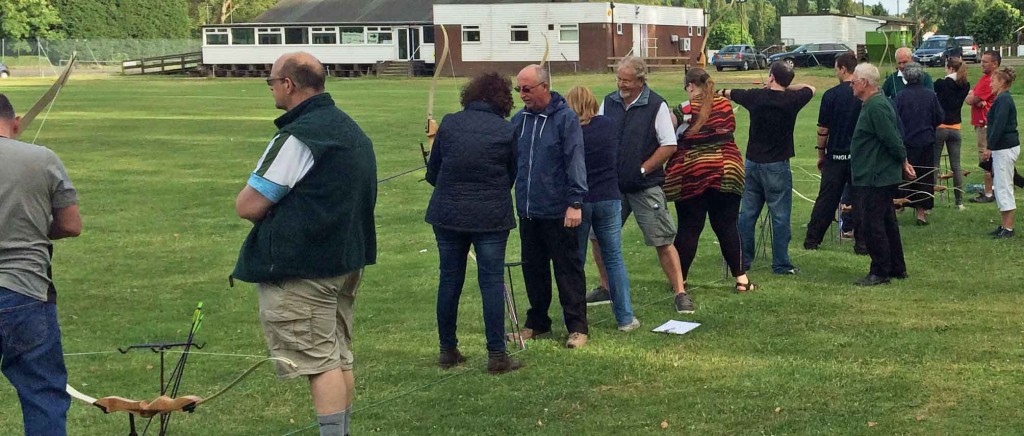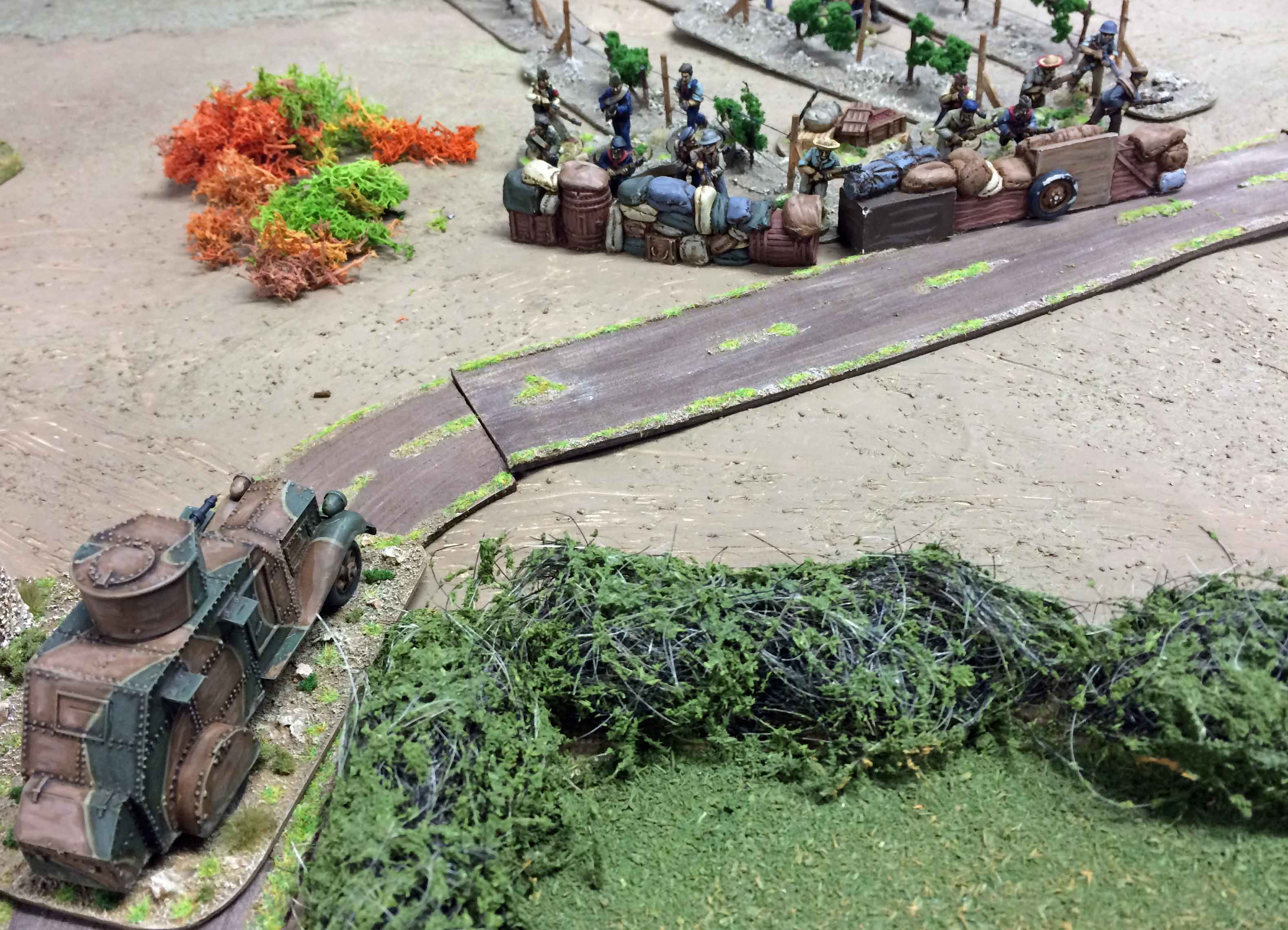With the club in its 30th year, we’ve been trying to lay on a few game involving most members. The battle of Teutoburger Wald was fought around mid September 9AD, so given the date of the 11th in the Osprey book this seemed a suitable subject for a club game being its 2005th Anniversary. As bit of background –
The name of the Teutoburg Forest in Germany will forever be connected to one of the most famous battles from ancient history,the defeat of the Roman general Varus. In September 9 CE, a coalition of Germanic tribes, led by a nobleman named Arminius, defeated the Seventeenth ,Eighteenth, and Nineteenth legions and forced their commander Publius Quintilius Varus to commit suicide. Not much is known on these legions, because of their destruction here, and they may have the surname of possibly Gallica or Germanica. The result of the battle was that Germania remained independent and was never included in the Roman empire
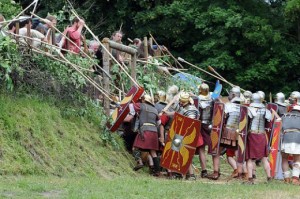
Varus’ forces included his three legions (Legio XVII, Legio XVIII, and Legio XIX), six cohorts of auxiliary troops (non-citizens or allied troops) and three squadrons of cavalry (alae). Most of these lacked combat experience, both with regards to Germanic fighters, and under the prevalent local conditions. The Roman forces were not marching in combat formation, and were interspersed with large numbers of camp followers. As they entered the forest northeast of Osnabrück, they found the track narrow and muddy. According to Dio Cassius a violent storm had also arisen. He also writes that Varus neglected to send out reconnaissance parties ahead of the main body of troops.
The line of march was now stretched out perilously long — between 15 and 20 kilometers. It was in this state when it came under attack by Germanic warriors. The attackers surrounded the entire Roman army, and rained down javelins on the intruders. Arminius, recalling his education in Rome, understood his enemies’ tactics, and was able to direct his troops to counter them effectively by using locally superior numbers against the dispersed Roman legions. The Romans managed to set up a fortified night camp, and the next morning broke out into the open country north of the Wiehen Hills, near the modern town of Ostercappeln. The break-out was accompanied by heavy losses to the Roman survivors, as was a further attempt to escape by marching through another forested area, as the torrential rains continued. The rain prevented them from using their bows because sinew strings become slack when wet, and rendered them virtually defenceless as their shields also became waterlogged.
Reconstruction of the improvised fortifications prepared by the Germanic tribes for the final phase of the Varus battle near Kalkriese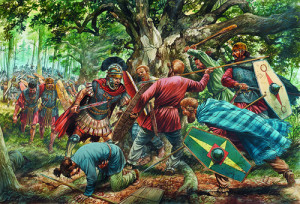
The Romans undertook a night march to escape, but marched into another trap that Arminius had set, at the foot of Kalkriese Hill. There, a sandy, open strip on which the Romans could march was constricted by the hill, so that there was a gap of only about 100 meters between the woods and the swampland at the edge of the Great Bog. The road was further blocked by a trench, and, towards the forest, an earthen wall had been built along the roadside, permitting the Germanic tribesmen to attack the Romans from cover. The Romans made a desperate attempt to storm the wall, but failed, and the highest-ranking officer next to Varus, Legatus Numonius Vala, abandoned the troops by riding off with the cavalry. His retreat was in vain, however, as he was overtaken by the Germanic cavalry and killed shortly thereafter, according to Velleius Paterculus. The Germanic warriors then stormed the field and slaughtered the disintegrating Roman forces. Varus committed suicide, and Velleius reports that one commander, Praefectus Ceionius, shamefully surrendered, then later took his own life, while his colleague Praefectus Eggius heroically died leading his doomed troops.
Our game was based on the 1st scenario from the Germanica book , by Warlord games, ‘Death in the Forest’. We scaled up the force lists, and there were roughly just over 20 units per side. The table was 20’ long by just over 3’ wide. The Roman deployment was random along the length of the road. The randomness dictating where the baggage (valuable objective) would be , and there were some ‘dummy’ locations to enforce the stretched out nature of the Romans march column.
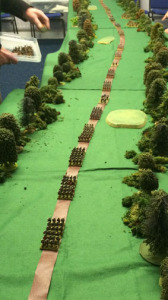
Once the Romans had been deployed then the Germans were places randomly by section. The table edges broken down into 14 sections and the 7 divisions places upon a die roll.
The rules I selected were Hail Caesar. My own brief being that the game should be able support up to 16 participants (we had a few dropouts and had 9 or 10), and could be set up played to conclusion in a weekday game night (about 3 hours). Hail Caesar is a simple set and most players picked it up quickly without much prior experience.
The game itself played as expected. The first turn the Germans get a free ambush attack while the Romans are in column. This generally meant there was a fight where the Germans rolled 9 dice to the Romans 1!  There was a special rule any Roman units that was broken as a result of this change wouldn’t be broken but would instead be reduced down to a ‘small’ unit for the remainder of the game. The net result of this was that of the 20 units only 1 Roman was broken in this way! It may be that we forgot the ‘wild fighters’ reroll for the Germans or the fact that the Romans had a 4,5,6 armour save!!
There was a special rule any Roman units that was broken as a result of this change wouldn’t be broken but would instead be reduced down to a ‘small’ unit for the remainder of the game. The net result of this was that of the 20 units only 1 Roman was broken in this way! It may be that we forgot the ‘wild fighters’ reroll for the Germans or the fact that the Romans had a 4,5,6 armour save!!
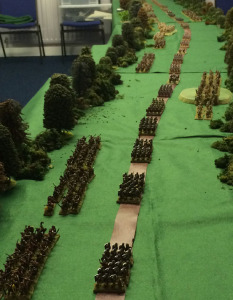
The second turn meant that the Romans could regroups as best they could and shake out into line (being drilled they always get a free move in the rules)., they could also remove any disorders they received in the prior turn. But still most the legions had taken several ‘hits’ as a result of the ambush charge. Most were well on the way to being at their 6 hits to become shaken (and then thing get bad!)
T hinks weren’t all their way for the Germans. The head of the Romans column had done particularly well, this may be the fact that they had encountered most the German skirmishers, and had driven most off back into the woods
hinks weren’t all their way for the Germans. The head of the Romans column had done particularly well, this may be the fact that they had encountered most the German skirmishers, and had driven most off back into the woods
The game was brutal and soon degenerated into localised bloodbaths down the length of the table. The game was always going to be stacked in favour of the Germans and after 3 hours the Romans’ break point was reached. The scenario book did have a pointing system for the result based on unit destruction, capturing baggage and killing commanders.
 The final score came in at 169 points to the Germans to 89 for the Romans. A solid German victory
The final score came in at 169 points to the Germans to 89 for the Romans. A solid German victory

I’m sure we got a lot of the rules wrong, but fun was had by most, and the game seemed to play out OK.
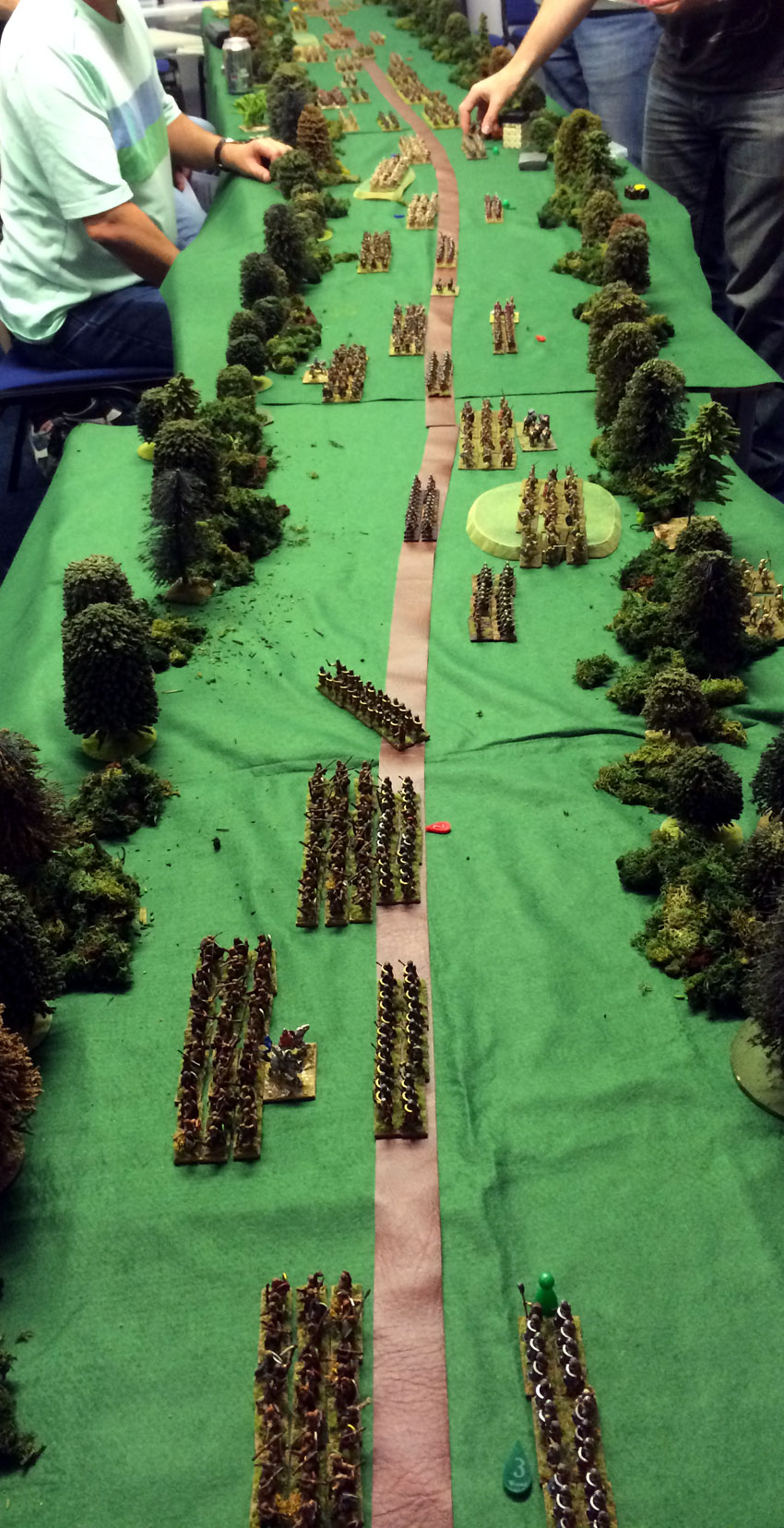
Notable Awards go to …
- Andy and Bob – who used the wrong morale result column for the whole of the game
- Steve – for committing his one and only commander into combat, Ray then obliged with a 12 and killed him, paralysing a section of the German attack
- Ray – for losing the Praetorian guards with Varus leading them. A morale roll of 4 , re-rolled because of stubborn veterans , down to the 2!


